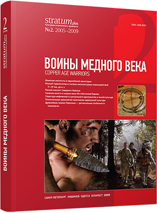Проблема локализации прародины сино-кавказской языковой общности
The localization of Sino-Caucasian motherland
Author(s): Aleksey A. RomanchukSubject(s): History, Theoretical Linguistics, Ancient World, Historical Linguistics
Published by: Издательский дом Stratum, Университет «Высшая антропологическая школа»
Keywords: Sino-Caucasian; Sino-Caucasian; Sino-Caucasian language; Setaria Italica; Panicum miliaceum;
Summary/Abstract: This article considers the hypothesis of S.A. Starostin, I.A. Peiros and some other researchers about the localization of the Sino-Caucasian motherland in the West Asia. The author shows some facts which do not allow us to localize the Sino-Caucasian motherland in the region in question.Then he pays attention to the fact that in Sino-Caucasian language there were some words for plants which were domesticated in East and South-East Asia. First of all we should mention some kind of millets – Setaria Italica and Panicum miliaceum. Millets were rare in western part of Eurasia during the Neolithic and the main nodes of their growing here was the region of Caucasus and South-East Europe.Besides, here should be mentioned apricot and hemp, which appears in Caucasus and South-East Europe in the Neolithic as well, but their origin is related with East Asia.On the contrary the main plants which were domesticated in Near East region (such as wheat, barley) and animals (ship and cow) appear in China only in the III millennium BC, i.e., too late. That’s why the author’s opinion is that the Sino-Caucasian motherland was in East Asia.
Journal: Stratum plus. Археология и культурная антропология
- Issue Year: 2009
- Issue No: 2
- Page Range: 367-373
- Page Count: 7
- Language: Russian
- Content File-PDF

